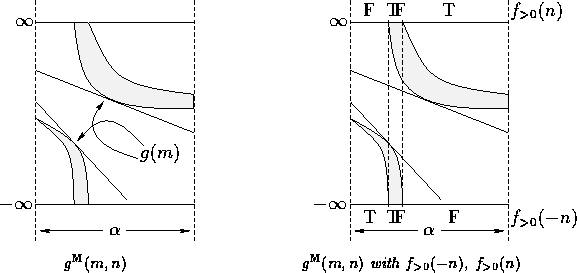




Next: 3.3.29 Concave UpDown Functions
Up: 3.3 Linear Interval Arithmetic
Previous: 3.3.27 Partial Binary Functions
Consider the division function,  , which
is both partial and
, which
is both partial and  -bumpy. For the division function,
-bumpy. For the division function,
The evaluation of  ,
proceeds as follows:
The division function is defined unless the divisor is zero:
In the evaluation above,
,
proceeds as follows:
The division function is defined unless the divisor is zero:
In the evaluation above,
 is evaluated:
For general binary functions, it may be natural to introduce more than
a single new constraint after a function application.
Enhancing
is evaluated:
For general binary functions, it may be natural to introduce more than
a single new constraint after a function application.
Enhancing  and
and  allows this; the common
binary functions do not naturally introduce multiple constraints.
The members of
allows this; the common
binary functions do not naturally introduce multiple constraints.
The members of  influence this decision.
influence this decision.





Next: 3.3.29 Concave UpDown Functions
Up: 3.3 Linear Interval Arithmetic
Previous: 3.3.27 Partial Binary Functions
![]() , which
is both partial and
, which
is both partial and ![]() -bumpy. For the division function,
-bumpy. For the division function,
![]()
![]()
![]()

![]()

